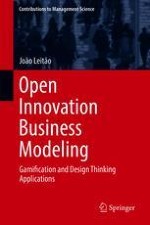2019 | OriginalPaper | Buchkapitel
3. Concepts, Methodologies and Tools of Gamification and Design Thinking
verfasst von : João Leitão
Erschienen in: Open Innovation Business Modeling
Aktivieren Sie unsere intelligente Suche, um passende Fachinhalte oder Patente zu finden.
Wählen Sie Textabschnitte aus um mit Künstlicher Intelligenz passenden Patente zu finden. powered by
Markieren Sie Textabschnitte, um KI-gestützt weitere passende Inhalte zu finden. powered by
